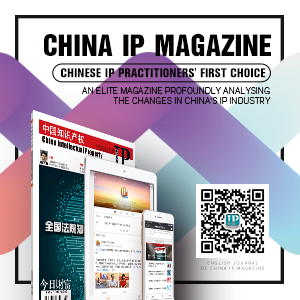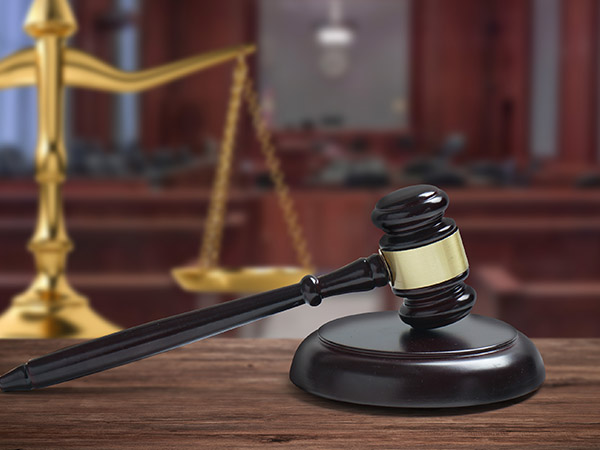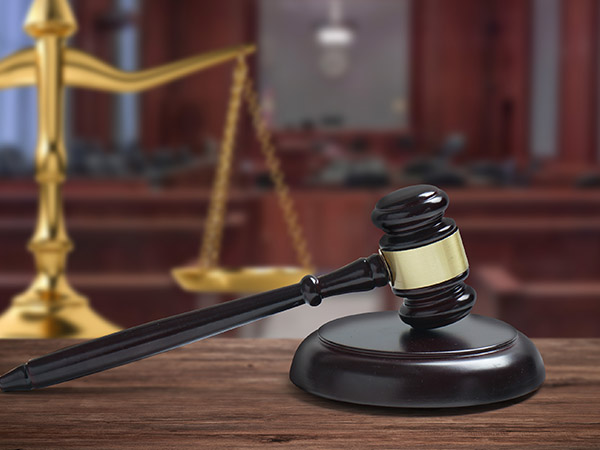Several Ideas on the Amendment of Trademark Law
By Jiang Jinghui, Trademark Office of State Intellectual Property Office
Trademark Off ice and Trademark Review and Adjudication Board (TRAB) of former State Administration for Industry and Commerce (SAIC) established the working group for amendments of the Trademark Law in March, 2018. In April, the working group publicly solicited the amendment opinions for the Trademark Law via the website: sbj.saic.gov.cn. China’s current Trademark Law was officially implemented on May 1, 2014. In less than four years, a new round of amendment work of the Trademark Law has been launched. This paper holds that this amendment of the Trademark Law shall regard the actual use of the trademarks as the basic value orientation of legislation to maximally suppress the malicious registration of trademarks through the system design. Meanwhile, the registration process shall be simplified to improve the efficiency of authorization and right establishment for the trademarks. In this paper, a preliminary discussion on the path of the amendment of the Trademark Law is made from two aspects, namely, suppression on malicious registration of trademarks and reinstallation of opposition system.
I. Suppression of Malicious Trademark Registrations
It shall be said that the Trademark Law, as a basic law for trademark registration and management, has played an important role in the construction of China’s market economy. However, there are a large number of maliciously registered trademarks of other people, including well-known trademarks, brands with a long history, famous names, celebrities and roles, famous attractions, etc., and in particular, the junk trademarks that are not intended for use can be found everywhere. It seems not a big problem to maliciously register trademarks abroad, but why is it a serious social problem in China? The fundamental reason is that there are gaps and deficiencies in the design of China’s legal system in this respect. In this regard, it is recommended to improve the registration system of trademarks from the following three aspects:
1. Setting up use or intent-to-use system, so as to prevent and eliminate from the beginning the trademarks applications for registration not based on use or intent to use. By the end of 2017, China had accumulated more than 17 million trademark applications. However, what are the trademarks actually used in the production and operation activities of enterprises? Among China top 50 national trademark applications in 2017, 30% are the natural persons, of which, one particular individual ranked number one for 5,767 applications. It is undoubtedly from business common sense he is doing trademark warehousing. What needs to be considered is why it is difficult to effectively suppress trademark warehousing under the existing laws. One of important reasons is that there is a lack of a good system at the source to prevent and suppress the application registration of trademarks without actual intent to use.
2. Imposing legal obligations for use of trademarks at the juncture of a s s ignment, renewal and interference, etc. a. Assignment of trademarks is based on the actual use of trademarks. After a trademark is registered, no matter whether it is used or not, it can be transferred to others to yield high returns. This is currently the original driving force for trademark warehousing. China’s relevant laws should require proof of actual use of the mark when applying for recordal of assignment of the trademark, and otherwise the assignment may not be recorded. The above practices can systematically cut off the trademarks as a chain of profit-making tools, and effectively suppress the malicious registration behavior of abuse of application rights. b. The evidence for use of trademarks shall be submitted for the renewal of trademarks. Only the actually used trademarks can have the rational foundation for renewal, or the logos shall re-enter the public domain for others to use and control. c. Only the actually used trademarks can fight against others. Under the current statute, a registered trademark, whether used or not, constitutes a prior right and can prevent the subsequent application for the trademark. It is clear that this system design is unreasonable. What the trademark laws protect shall be the actually used trademarks. If a trademark is not used, the registered trademark is only a trademark in the formal sense, rather than the object to be protected by the Trademark Law. When the Trademark Law was amended in 2013, it was suggested to increase the use requirements on the citation marks in the opposition or invalidation procedure. However, this proposal was not adopted finally. This amendment to the law can deeply study and demonstrate the aforesaid problems and establish a system in which only the actually used trademarks are protected by the law.
3. “Malice” acts as an independent reason for refusal and plays a miscellaneous role in stopping the malicious registration under the circumstance that the specific law cannot be regulated. This paper holds that “Malice” cannot act as an independent reason for rejection. This is a deficiency in the design of legal system for China’s trademarks. Even if it can be presumed that a trademark registrant in a case is obviously malicious, its registration behavior will not be regulated because its registration behavior fails to meet all constituent elements of a specific law.“A maliciously applied trademark cannot be registered and prohibited from use” can act as a miscellaneous provision to regulate the malicious registration behaviors that cannot be clearly defined or cannot be anticipated by laws.
II. Reinstallation of Opposition System
In recent years, the number of applications for trademark opposition in China has continued to run at a high level. In 2017, it has reached 72,575 oppositions and 63,004 opposition adjudications. The sustainment rate of oppositions has gradually increased. The sustainment rate of oppositionopposition (including partial establishment) in 2017 was 34.25 %, and it reached 39.54 % in April, 2018. Bordered on the amendment of Trademark Law in 2010, the opposition system of trademarks in China was changed from two instances of administrative proceedings to two administrative instances plus the two judicial instances, totaling four instances. The opposition system in the current Trademark Law has been re-structured in two directions: one, opposition fails, and the trademark is approved for registration, for which the opponent may petition the TRAB foropposition invalidation; the other, where the opposition is sustained, the registration is not approved, and the opposed may petition the TRAB for a review of the denial of registration.
The main problems i n the current opposition system are: a. unequal footing for opponent and the opposed; b. lengthy proceedings of four instances; c. prolonged opposition period. The opposition period is three months, the supplementary period for opposition application is three months, reply supplementary period for reply is three months, the opposition limit period is 12 months and it is extended for six months in case of special circumstances. Where a trademark is objected, it will generally take more than one year to two years from the date of first instance announcement to the end of opposition review through the opposition procedure.
This paper holds that t h e opposition system of trademarks in China shall be scientifically and reasonably designed according to the national conditions and tradition and reality of the trademark legal system. The preliminary assumptions are as follows:
1. The prior opposition system is maintained. The main reasons are as follows: a. it conforms to the tradition of China’s opposition system of trademarks. Since the promulgation of the Trademark Law in 1982, the opposition system has been maintained; b. it is conducive to maintaining the stability of trademark rights. It is necessary to set up a gateway before the registration in the suppression of malicious registrations, which can effectively reduce the disputes after trademark registration; c. it reflects the credibility of the trademark registration. After a trademark enters the opposition procedure after the first trial procedure, the social public including the prior oblige or the interested parties may then object to the application for the trademark. Where there is no opposition or the opposition is denied, the application for trademark can then be approved for registration. The authorization of trademark registration has credibility only after the opposition procedure; d. it is based on the severe status quo of malicious registration. The dissenting rate of trademarks was 2.12 % in 2017, which is not high, but the absolute value of the oppositions was not low, reaching more than 70,000 cases (the number of oppositions after the review of relative reasons), of which, the malicious registration accounts for a considerable proportion. Considering that the registrant enjoys the exclusive rights to use the trademark after it is approved for registration, the maliciously registered trademarks will also exert serious negative impacts on the society even if they have a small proportion after the opposition postposition is adopted.
2. The opposition period is shortened to one month. The dissenting rate of 2.12 % means that nearly 90 % of registered applicants have been deferred to register for three months, so the registration efficiency is lower and it is not beneficial to the registrant to obtain the exclusive rights of the trademarks as soon as possible. With the further improvement of the electronic level of trademark application registration, it is more appropriate to set the opposition period to one month, which thus gives consideration to the fairness and efficiency of trademark registration.
3. The two instances of administrative proceedings is changed into one instance of administrative proceedings. The opposition procedure overlaps functionally with the non-registration review or invalidation notice procedure, which reduces the efficiency of authorization and right confirmation of trademarks.It is recommended to merge them.Moreover, the one instance of administrative proceedings is also an international practice.
4. The review of relative grounds is retained. The main reasons are as follows: a. the review of relative grounds can relieve the burden of right holders to monitor the trademarks. By the end of 2017, China had accumulated more than 17 million trademark registrations. If the review of relative reasons is abolished and the long-term monitor ing of trademarks is made by the registrants, it will result in a substantial increase in the overall operation cost of the society; b. if the review of relative grounds is abolished, coexistence of trademarks will be more serious. China has a vast territory and a large number of market entities. It is extremely easy for the coexistence of trademarks.However, the coexistence of trademarks will inevitably harm the interests of specific right holders and consumers, and this result does not meet the legislative purposes of the Trademark Law; c.To allow the opposition procedure to undertake the task of the review of relative reasons will lead to an inefficient opposition system and it cannot be acceptable by the opposition system; d. The review cycle of trademark application will be shortened to four months in the future. Four months have been very short. It is of little significance to abolish the review of relative reasons to shorten the review cycle and improve the efficiency of registration. Furthermore, in order to improve the registration efficiency of trademarks, the review of relative reasons can only exclude the same or highly similar coexistence of trademarks and the coexistence of other similar trademarks shall be determined by the markets.
In conclusion, the design idea of opposition system in China can be summarized as follows: the review of relative grounds is retained, the opposition is pre-arranged and reviewed by the examination department, the opposition period is shortened to one month and any disagreement with the opposition decision will be settled directly by judicial relief procedures.










